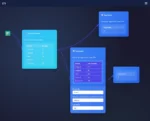
by tyler garrett | May 27, 2025 | Data Management
In our rapidly digitizing economy, organizations regularly move data beyond geographical borders to fuel global collaboration and innovation. However, cross-border data transfers introduce critical technical and compliance risks that must be effectively managed. Regulatory landscapes such as GDPR, CCPA, and emerging cross-border data transfer guidelines necessitate rigorous compliance, technical foresight, and innovative solutions. As strategic leaders in the data analytics consulting space, our experience has shown that effective cross-border technical controls are indispensable. Implementing stringent technical controls not only ensures compliance but also fortifies your organization’s data foundation for agile, global-scale innovation. Let’s unpack how robust technical controls empower seamless and secure cross-border data flows.
Understanding Cross-Border Data Transfer Technical Controls
The phrase “cross-border data transfer technical controls” refers to the practical, technology-driven measures organizations adopt to protect data integrity, security, and compliance as information crosses geographical boundaries. These controls generally cover encryption strategies, secure data pipelines, data validation approaches, and careful implementation of emerging technologies such as computational storage platforms. When properly executed, they help navigate complex international data compliance regulations while maintaining operational agility.
A well-architected data transfer control strategy starts from thorough compliance knowledge, reinforced by technology infrastructure capable of securely accommodating rapid data transfers while applying necessary audit trails and privacy assurances. Technical controls utilize encryption methods, secure communication channels, verification mechanisms, and comprehensive pipeline instrumentation to provide complete visibility and traceability. Furthermore, leveraging advancements in computational storage can minimize latency and bolster privacy by restricting sensitive data access to designated storage layers.
Understanding and effectively deploying these technical controls isn’t just good practice—it’s paramount for complying with international regulations like GDPR, ensuring privacy enforcement, and enabling real-time collaboration across multinational teams. This foundational knowledge enables organizations to balance compliance constraints with seamless operational workflows, propelling global innovation.
Encryption and Data Protection Strategies
Encryption remains one of the first lines of defense for cross-border data transfers. It mitigates risk by ensuring sensitive data remains inaccessible to unauthorized parties, significantly reducing the potential exposure in the event of a breach. While encryption can vary in complexity and implementation based on factors such as data sensitivity and compliance obligations, robust encryption should include transparent encryption-at-rest and efficient Transport Layer Security (TLS) protocols during data transmission.
Organizations increasingly turn to advanced encryption techniques integrated directly into existing data processing pipelines. By establishing schema registry integration for pipeline data validation, you enforce consistent data formats, simplify encrypted data handling, and streamline validation. Coupling encryption with data validation mechanisms ensures data arrives intact, uncompromised, and with an accurate, verifiable audit trail.
Moreover, data masking, tokenization, and anonymization are essential for compliance with privacy regulations. Ensuring technical safeguards like data anonymization is critical for globally regulated compliance environments, creating additional privacy protection layers to maintain responsibility and auditability across geographies.
Mastering Data Pipelines for Secure Transfers
Secure cross-border data transfers hinge significantly on robust pipeline architecture and meticulous monitoring strategies. Data pipeline best practices provide improvements in reliability, audition capability, and rapid issue resolution speed. By confidently managing and monitoring distributed pipelines, organizations exert precise control over cross-border data streams, further reducing operational risks.
An effective strategy involves establishing clear and intuitive data flow visibility to identify pipeline bottlenecks early. Leveraging established frameworks such as Google’s golden signals—latency, traffic, errors, and saturation—offers insights to proactively detect and remediate pipeline anomalies. Our technical advisory on golden signals for data pipelines explores these essential pipeline metrics in depth, outlining tactics for optimizing pipeline health.
Classic SQL functionality provides additional versatility. Tools like the SQL BETWEEN operator for range filtering enable precise control of fluid, real-time analytics, performance improvements, granular management capabilities, and reliable data segmentation. These targeted monitoring practices help you adhere strictly to data transfer compliance requirements while boosting pipeline efficiency.
Robust Data Recovery and Continuity Controls
Reliable data recovery and continuity controls are critical in cushioning your organization from unforeseen failures during cross-border transfers. Failures in the data process can severely damage business insights, violate compliance regulations, and lead to costly remedial efforts. Ensuring resilient recovery protocols protect your data pipeline has never been more necessary.
Many fail-safe mechanisms are available, including strategic checkpoint placements and the tactical execution of partial processing recovery methods. These allow your systems to efficiently and rapidly resume failed pipeline steps rather than restarting costly, large-scale writes or reads from scratch. Detailed logging, automatic failover implementations, and clearly defined recovery checkpoints ensure minimal loss of essential data.
Furthermore, investing in isomorphic architectures enables powerful recovery mechanisms. This strategy of sharing logic between server and client systems fosters seamless continuity of processes, bolstering transfer resilience and enhancing strategic data redundancy across geographic boundaries. Thoughtfully integrating these robust controls ensures interruptions to global operations are quickly addressed, minimized, or even, ideally, prevented entirely.
The Importance of Strong Data Modeling for Cross-Border Transfers
A robust data modeling strategy enhances clarity, scalability, and overall compliance effectiveness during cross-border operations. Thoughtful, precise data modeling directly impacts operational agility and cost savings associated with strategic international data controls.
The concept of data modeling as the blueprint of successful, scalable implementation strategies cannot be overstated. Comprehensive data models drive faster, smarter decision-making by documenting data usage, sensitivity, regional regulatory requirements, and alignment with compliance completeness. This structured approach also equips organizations with straightforward clarity in regulatory contexts, simplifying audits and demonstrating responsible stewardship of cross-border data.
Adopting comprehensive data models connects directly to efficient data visualization and advanced analytical outcomes. Fostering greater analytic maturity by embedding statistical context in data visualizations significantly elevates data-driven strategies across regions and complies with regional nuances in compliance scenarios. With careful design and strong domain expertise, your data modeling activities will empower better decision-making and cross-border transfer outcomes.
Leveraging Expert ETL Consultancy for Strategic Implementation
Expert ETL consultancy ensures practical implementation and strategic alignment of your cross-border data technical controls. Experienced consultants provide deep-domain knowledge to streamline data extraction, transformation, loading processes, and navigate complicated compliance frameworks successfully. Skilled ETL experts strengthen the entire international data transfer life cycle to capitalize on scalability, performance, availability, and security simultaneously.
Through professional advanced ETL consulting services, we help customers architect robust international data transfer pipelines from inception. Our teams craft solutions to maintain sophisticated pipelines, integrate encryption protections, data validation processes, and reliable recoverability. ETL professionals also augment the pipeline performance by recommending optimized workflows and compliance-focused integrations.
By seeking seasoned professional guidance, your business optimizes technical initiatives, mitigates internal risks, accelerates compliance success, and concretely boosts competitive global strategies. Engaging expert consultants for these intricate data initiatives translates quickly into measurable operational improvements, transparency, security rigor, and enhanced data-driven innovation.
Conclusion: Strategically Managing Cross-Border Data Technical Controls
Navigating the intricacies of cross-border data transfers requires targeted, practical strategies inclusive of encryption, proactive pipeline monitoring, resilient recoverability, strategic modeling capabilities, and professional ETL consultation. Implementing these controls isn’t simply regulatory compliance adherence; it’s a foundation for driving innovation and global competitiveness in a data-intensive world.
Strategic technical controls position your organization benignly within changing global regulatory frameworks. They strengthen innovation, safeguard insights, and empower organizational stakeholders to engage confidently in data-driven global growth opportunities.
Thank you for your support, follow DEV3LOPCOM, LLC on LinkedIn and YouTube.

by tyler garrett | May 21, 2025 | Data Processing
In today’s fast-evolving data landscape, the push toward automation has never been stronger. Companies aim to streamline workflows, gain rapid insights, save on costs, and deliver quality products faster than before. Yet, fully automating complex data-driven workflows isn’t always possible or advisable. Behind every notable algorithm and dataset, there’s the indispensable touch of human expertise. That’s where “human-in-the-loop” (HITL) data pipeline design patterns come into play. Powered by reliable data systems, thoughtful integration of human intelligence, and strategic analytics infrastructure, HITL systems can revolutionize the way your organization interprets, manages, and leverages data assets. Let’s explore the design patterns, best practices, and strategic implications of human-in-the-loop data pipelines, illuminating pathways toward innovation and continuing competitive advantage.
Understanding Human-in-the-Loop Data Pipelines
At a fundamental level, a human-in-the-loop data pipeline is a workflow architecture integrating human decision-making steps into automated processes. Solely machine-driven pipelines work wonders in scenarios involving clear business rules or tasks requiring predictable outcomes. However, in cases requiring nuanced decision-making, subjective interpretation, or complex judgments, entirely automated pipelines may lead to inaccuracies, risks, or oversight.
Integrating human review or validation into data pipeline workflows is particularly essential for critical industry sectors such as finance, healthcare, and compliance. By combining automation with human oversight, enterprises ensure quality control, reduce inaccuracies, and leverage expert judgment where automated algorithms still fall short.
A robust example is anomaly detection processes within financial systems. Algorithms can flag transactions as potentially fraudulent based on patterns—but typically, human analysts need to examine flagged incidents to make final determinations. The strategic injection of human intelligence ensures precise business decision-making, compliance adherence, and customer-centric outcomes, even amid the complexity of large-scale transactions.
Essential Human-in-the-Loop Pipeline Design Patterns
Pattern 1: Human Judgment Integrated Data Validation
This pattern involves automated data validation complemented by a manual approval or rejection workflow. Automated validation processes can quickly process high-volume data, flagging data points that exceed predefined thresholds or deviate from expected behaviors. However, certain decisions, like verifying authenticity of critical business datasets or handling ambiguous data scenarios, often require human judgment.
Utilizing these validation models maximizes accuracy because humans can catch anomalies automation might overlook, preventing propagation of faulty data downstream. The schema usually adopts visual interfaces enabling users to clearly identify data discrepancies and provide direct input. Employing high-performing analytics tools and visualizations can profoundly enhance this pattern. For those looking to compare visualization techniques, we recommend our recent blog article Comparing Data Visualization Techniques.
Pattern 2: Human-Supported Learning and Feedback Loops
True strength in human-in-the-loop systems involves periodically refining machine learning models based on human feedback. This feedback loop creates a virtuous cycle: predictive algorithms provide suggestions, humans evaluate or correct outputs, and insights from human judgment feed back into models to improve accuracy over time.
Consider customer support analytics, where automated sentiment analysis classifies feedback. Misclassifications or nuanced cases requiring deeper interpretation can be routed to human reviewers. Human inputs subsequently retrain the algorithm, enhancing analytical accuracy in future iterations. Adopting such a cyclical approach leverages continually improving data operations maturity—a topic we explore deeper in our guide DataOps Maturity Assessment: Where does your Organization Stand?.
Pattern 3: Exception Handling Escalation Model
In highly automated pipeline workflows, there will inevitably be outliers or exceptions—unexpected results or errors flagged during processing. Rather than halting the entire pipeline or leaving automation to guess, setting up exception escalations with input from domain-specific experts is a key component in HITL strategies.
For instance, in mission-critical environments like healthcare or finance, automated data ingestion processes encountering suspicious or uncertain records trigger human review workflows, escalating these data points to expert analysts. This prevents costly errors in processes downstream and maintains compliance. Businesses investing extensively in exception handling models often need advanced database strategies. For deeper insights, consider checking our dedicated resource on relational database solutions: MySQL Consulting Services.
Technologies Driving Human-in-the-Loop Pipelines
Implementing HITL pipelines requires a comprehensive technology stack, ranging from big data platforms and machine learning frameworks to collaborative workflow tools. Effective technology selections depend on the type and complexity of data processed, as well as your organization’s precise goals and budget considerations. Given rising costs associated with software subscriptions, it’s wise to choose tools carefully, as covered in our piece The SaaS You Picked Yesterday Will Be More Expensive Tomorrow.
Technologies worth noting include machine learning algorithms combined with big data platforms like Apache Spark for data processing at scale, data visualization software like Tableau, Power BI, or Looker to efficiently enable human analysts, and collaborative tools like Jira or Slack to streamline human workflows. Data analysts deeply benefit from mastering these technologies, as discussed extensively in our guide, The tools and technologies used for Data Analytics.
Benefits and Challenges of HITL Pipelines
HITL pipeline designs confer many strategically important advantages. Teams gain accuracy improvements over purely automated pipelines, as humans refine data quality and correct biases. Integrating human insights also adds flexibility—when business, market, or technological factors change rapidly, human intervention can help quickly adapt automated pipelines.
Yet, there are challenges to effectively implement HITL pipelines. Many systems are susceptible to operational bottlenecks if not designed correctly; for example, human analysts who minimize the value of automation by manually addressing tasks technology should expedite. Additionally, human-made errors can hinder pipeline efficiency, requiring clear governance policies and safeguards, such as alert-based threshold controls—something our recent troubleshooting resource helps illustrate vividly: Resolving Error 1084 Troubleshooting Guide.
A structured approach to human engagement, clearly defined human roles, and optimization of workflows through suitable technology can turn these challenges into manageable hurdles on your path toward analytics excellence.
Strategically Implementing Human-in-the-Loop Data Pipelines
When organizations embrace HITL pipeline design, careful strategy becomes critical. Business leaders and strategic decision-makers must first pinpoint the exact areas where human judgment adds significant, undeniable value. Early integration of analytics professionals during pipeline creation further secures analytics buy-in and prepares teams to effectively utilize HITL functionality. For professionals engaged in these design strategies, networking effectively with data science specialists is essential—our resource on the art of networking with data science professionals provides actionable insights.
Data visualization, collaborative software adoption, workflow clarification, and continuous feedback loops are critical drivers ensuring your HITL model remains relevant, robust, and productive, especially during uncertain market dynamics. Business agility demands staying ahead of technical trends and developments—as explored thoroughly in our recent article, The Increasing Importance of Data Analysis in 2023.
The net improvement when strategically adopting HITL pipelines fosters innovation, ensures compliance, delivers improved customer experience, and perpetually keeps your data analytics accurate, insightful, and transformative.
Conclusion
Adopting human-in-the-loop data pipeline designs is no longer optional if your enterprise aims for optimal insight fidelity, robust data accuracy, and continuous technological improvement. Although challenges and considerations exist, strategically embracing these design patterns augments business resilience, enhances data strategy sophistication, and sharpens competitive positioning. From effectively handling complex data workflows to bolstering innovation, remember—advanced analytics & innovation demand a collaborative blend of technology and human judgment.

by tyler garrett | May 20, 2025 | Data Processing
Data has become the cornerstone of modern organizations, illuminating crucial insights and accelerating decision-making. As data ecosystems evolve rapidly, businesses reliant on batch processing pipelines are now turning their gaze towards real-time processing solutions. This shift isn’t merely a technological upgrade; it’s a strategic move that positions organizations to respond ahead of the competition, seize emerging opportunities, and deliver extraordinary value through instant data-driven responses. For today’s digital-first, customer-centric enterprises, migrating from batch to stream processing isn’t optional—it’s essential. In this blog, we guide you through the migration path in a comprehensive, practical manner to ensure you leverage streaming analytics effectively to transform business intelligence into actionable strategies and engage stakeholders with dynamic, impactful data visualizations.
Understanding the Shift: Batch Processing vs. Stream Processing
To clearly map your journey from batch processing to stream processing, it’s imperative to understand the fundamental differences. Batch processing involves the accumulation of data to certain volumes or a set period of time before processing all at once. This approach has historically dominated due to technological constraints and resource limitations. While batch processing is sufficient for specific low-frequency scenarios, it falls short in today’s fast-paced, decision-critical environments where actionable insights must be available instantly.
Conversely, stream processing enables organizations to analyze and respond to data incrementally as soon as events occur instead of waiting for scheduled intervals. It treats the flow of data as a continuous ongoing sequence of events, effectively allowing organizations to act swiftly, adjust business operations in real time, and stay ahead of competitors. These solutions are especially crucial when the timeliness of data directly impacts business decisions, customer success, and market recognition.
For example, a globally distributed retail company needs instantaneous visibility into transactions across many regions. Traditional batch processing may delay actionable insights, negatively impacting customer satisfaction, market adaptability, and revenue generation. On the contrary, stream processing allows the company to generate instantaneous insights and predictive analytics, enhancing stakeholder engagement by illustrating key trends and patterns through real-time storytelling through data visualization.
Assessing Your Current Data Infrastructure and Analytics Needs
Successful migration demands robust preparation and planning. Begin by evaluating your existing data infrastructure comprehensively. Begin with outlining your present batch system, including its workflows, data integration techniques, analytics tools, dashboard platforms, data storage systems, and any dependences or workflows closely intertwined. Assess performance benchmarks, current bottlenecks, data latency issues, and scalability limitations inherent in your existing setup.
Next, consult multiple stakeholders across the organization—not only those handling data operations—bring in operational teams, management, and analytics professionals. Understand their analytics pain points, the value gained from immediate insights, and prioritize use cases where faster insights could profoundly impact decision-making or financial performance. Isolate groups within your organization whose decision-making and workflows are highly dependent on time-dependent insights, such as sales, marketing, customer experience, security, and compliance teams, and focus stream adoption efforts initially within these departments.
Furthermore, your analytics and reporting capabilities must align well with a real-time data processing context. Assess your current dashboard tooling and visualization strategy. Make a conscious effort to transform static reports to real-time dashboards carefully. To grasp comprehensive knowledge of visualization techniques, consider exploring existing resources such as our comprehensive tutorial on creating basic charts and graphs. By concretely assessing your existing data practices, infrastructure, personnel, and future analytics vision, organizations effectively build their migration roadmap.
Selecting Appropriate Technology for Stream Processing Migration
The software landscape has expanded, offering various tools and platforms designed for real-time stream analytics. Successfully selecting the correct technology depends on factors such as data throughput expectation, latency tolerance, scalability, data schema complexity, data integration requirements, DevOps competencies, and ease of operations supported.
Popular frameworks such as Apache Kafka, Apache Flink, Apache Spark Streaming, Google Cloud Dataflow, and Amazon Kinesis represent powerful open-source or cloud-managed options that transfer businesses smoothly into real-time data capabilities. It’s critical to evaluate how these solutions cater specifically to your organization’s unique market context and technology stack before deciding. Consider features such as data replication reliability, ordering guarantees, stream processing capabilities such as windowing or stateful processing, robust analytics libraries, integration ease, and strong developer ecosystem support during decision making. Also, carefully evaluate and benchmark the technology for performance metrics, failover robustness, and data integration flexibility.
For businesses prioritizing cloud-native advantages, managed services are often ideal, handling much of the infrastructure complexity inherent in real-time stream pipelines. For example, organizations leveraging cloud database infrastructure such as MongoDB might consider managed cloud transformation approaches using MongoDB Atlas. Such cloud-based infrastructure helps organizations upscale services effectively while maintaining visibility and flexibility required within high-velocity analytics processes.
Migration Planning: Steps Toward Real-Time Streaming Adoption
Once your goals, platform, and infrastructure are established clearly, proceed with the migration step-by-step, strategically approaching each iteration to mitigate risk. Choosing one pilot use case is often recommended, as you can effectively monitor system performance, reliability, latency, and associated challenges clearly before scaling the entire business processing architecture migration.
Begin by breaking down the existing batch workflows and identifying data sources. Then, translate the batch workflow logic to a streaming counterpart, incorporating critical streaming semantics such as windows, time-based sessions, and event-driven analytics rules. As a best practice, implement explicit event-based messaging or data transportation enhancements to achieve higher dependability and speed of event ingestion. Use techniques around data buffering and appropriately scaled window configurations to optimize data throughput and flow balance for real-time analysis.
Continuous performance monitoring becomes essential throughout the transformation process. Establish comprehensive monitoring frameworks early, track system health, performance, capability metrics, and throughput analysis data points. Constant review of streaming workflow service level objectives (SLOs) allows businesses to detect and mitigate any streaming issue or scalability limitations proactively. Learn more by exploring our focused article about designing reliable and maintainable data pipelines, ensuring the continued efficiency and accuracy of your new data streaming infrastructure.
Optimizing Visualization and Analytics Through Real-Time Streaming
Once the streaming pipelines are successfully implemented, optimizing visual communication becomes key to providing organizational value. Real-time analytics enable dynamic reporting capabilities, transitioning from static representations to continuously refreshed visual dashboards that depict trends, alerts, and KPIs instantly.
Prioritize dashboard responsiveness and clarity, creating visualization that human cognition can quickly interpret in real-time scenarios. Also, ensure dashboards/services chosen during migration are capable of instant data refresh times, interactive functionality for quick exploration capability, scalable real-time integration features, and are built specifically for supporting streaming data.
Performance tuning also plays a key role when integrating streaming data into analytical dashboards and visual reports. Higher frequency updates require optimized backend data pipeline interactions paired with high-performance data visualization tools. Our expertise in performance tuning for data visualization dashboards helps organizations intelligently improve query responsiveness, dashboard rendering speed, and real-time analytics effectiveness—creating a positive end-user experience with impactful insights delivery. Finally, empowering end-users with intuitive visualization platforms like Tableau can enhance further self-serve analytics opportunities within your team while streamlining operations. Organizations exploring these capabilities can use resources like the Tableau Desktop download guide for additional visualization tooling support and onboarding.
Conclusion: Accelerating Towards Real-Time Data Excellence
Converting batch pipelines to real-time data streaming grants organizations a competitive edge in today’s digital ecosystem marked by rapid decision-making and instant responsiveness. A strategic migration plan, robust technology selection, deliberate phased rollout, continuous monitoring, and performance optimization transform data analytics from static reports to instantaneous business agility and enhanced decision-making capabilities.
Real-time stream processing isn’t just a technological necessity—it’s a proactive leap towards innovative business strategy execution. Embracing streaming analytics technologies wisely, alongside effective visualization practices, empowers your business to stay ahead, drive transformative digital strategies, and ensure confidence in your organization’s ability to pivot quickly to market demands. Trust your migration journey to expertise, empowered by the strategic guidance outlined here, to truly harness the power and potential of real-time data streams.

by tyler garrett | May 18, 2025 | Data Processing
In today’s dynamic data ecosystem, businesses and innovators are being driven towards rapid, iterative growth in their data pipelines. With more robust analytics platforms, continuous integration, and near real-time data processing, schema evolution emerges as a critical consideration. Schema evolution—the changes that occur over time to the structure of data—is not merely an inconvenience to developers, but a strategic opportunity to proactively manage data quality, leverage scalability, and unlock enhanced analytics capabilities. Effective schema evolution handling allows data pipelines to adapt gracefully, maintaining reliable insight generation even as data stores transform. As trusted technical strategists in consulting engagements covering the breadth of data, analytics, and innovation, we understand that strategically managing schema evolution can significantly impact your organization’s analytical maturity, competitive advantage, and decision-making agility.
Why Schema Evolution Matters in Data Pipelines
Data pipelines are the lifeblood of decision-driven organizations, providing the vital data streams necessary to power insights, tailor operations, and predict outcomes. One of the key challenges in maintaining effective and efficient data pipelines lies in the management of schema evolution. Schemas—structured definitions of incoming and stored data—tend to evolve naturally over time due to changing business requirements, expanding analytics needs, or updates in upstream data sources. As a result, a strategic approach to schema evolution handling is critical to ensure data integrity, accuracy, and reliability.
Organizations ignoring schema evolution run significant strategic and operational risks. Unanticipated schema changes can lead to pipeline failures, delayed analytics, and erroneous insights, costing enterprises precious time and resources. Furthermore, suboptimal handling of schema evolution can restrict scalability and limit innovation, severely hampering analytical potential. Therefore, proactively managing and embracing effective schema evolution strategies ensures pipelines remain robust, flexible, and prepared for future growth.
Businesses intent on harnessing advanced analytics consulting services need to place schema evolution handling front and center in their data management strategy. Solutions such as dynamic schema adaptation, intelligent alerting, and automated ETL processes contribute significantly to analytics maturity, ultimately driving smarter business decisions.
Best Practices for Efficient Schema Evolution Handling
Adopting a Schema Evolution Strategy
The first step in handling schema evolution effectively is establishing clear guidelines for schema management. Leaders advocating greater analytical agility must begin by developing comprehensive schema evolution strategies. Key principles of these strategies include anticipating future data needs, transparent communication between data teams and stakeholders, and establishing resilient workflows to deal with schema changes quickly.
One powerful approach involves versioning schemas explicitly and treating schema definitions as code. Schema specifications—much like software code—should be continuously tracked, validated with automated tests, and deployed systematically. Version control tools paired with schema registries and repositories make schema management transparent and straightforward, ensuring changes in data formats or structures do not catch teams off-guard. Keeping schema in line with organizational analytics frameworks drives accuracy and ensures stakeholders have ongoing confidence in their data insights.
Leveraging robust extract-transform-load strategies is crucial. Invest time in understanding the integral role of ETL solutions in data integration, and include schema consideration right from design and implementation stages. An effective ETL strategy mitigates schema change disruptions, ensuring your business consistently leverages meaningful insights in near real-time, despite evolving data sources.
Utilizing Tools and Automation
Smart use of specialized tools streamlines handling of schema evolution and enhances pipeline robustness. Schema registries and automated schema validation platforms proactively detect schema drifts and incompatibilities, alerting developers to schema issues before they become significant operational problems. This automation translates directly into reduced downtime, accelerated maintenance, and better resource allocation.
Additionally, providing your team with access to powerful data visualization applications—through installing industry-leading platforms like Tableau Desktop—enables faster debugging of schema evolution issues with ease, clarity, and precision. Intuitive visualizations offer instant validation and identification of discrepancies or relationships between different schema versions. Investing in visualization extracts maximum value from data environments, ensuring stakeholders remain aligned on evolving schema and analytics demands.
Employing scripting languages such as Python further enhances automation. Teams can leverage Python’s flexible libraries and frameworks for tasks such as data parsing, transformations, validation tests, or dynamic schema adjustments. Effective use of Python scripts for tasks such as web-scraping with dynamic schema requirements demonstrates how automation facilitates sustainable growth and innovation in data ecosystems.
Impacts of Schema Evolution on Data Analytics and How to Address Them
Maintaining Data Consistency and Integrity
A key benefit of adept schema evolution management is ensuring data consistency and integrity. Unplanned or unmanaged schema evolution often results in serious consequences, including data redundancy, aggregate retrieval inefficiencies, compromised data integrity, and even interrupted business workflows or analytical insights. By adopting clearly implemented schema strategies, businesses precisely anticipate pipeline behavior and uphold reliability of their analytical insights.
Appropriate usage of schema validation tools and automated testing frameworks ensures confidence in the consistent validity of your data models even through significant pipeline transformations. Modern analytics platforms and best practices—such as advanced Tableau consulting—support visibility into schema evolution implications, giving organizations control they need to maintain trust and regulatory compliance around data use.
Enhanced Scalability and Business Agility
Strategic schema evolution enables pipeline scalability and improved business agility. Organizations capable of adapting rapidly to evolving schemas reduce lead time turning data into actionable insights, helping businesses achieve competitive advantages.
Moreover, data engineering teams can implement techniques that enable fluid evolution of schemas, such as dynamic schema applications, no-schema databases or flexible schema storage. Organizations seeking guidance can benefit from reading our comprehensive guide – Data Engineering for Small Teams: Maximizing Impact. These efficient schema handling approaches promote rapid scaling and drive business agility. Leading businesses continuously develop schema evolution management methods and rapidly adapt to analytics needs, responding effectively to data opportunities as they arise.
Common Challenges and Recommendations
Despite clear benefits, schema evolution handling presents common challenges. Unauthorized schema modifications, insufficient communication between analytics and engineering teams, or inadequate schema change history inevitably restrict data pipeline robustness. Thorough managing and revoking privileges in access control can mitigate instances of unauthorized data or schema manipulation, reducing disruptive risk considerably.
Choosing appropriate tooling or platforms for schema evolution remains critical. Different pipelines and analytics needs demand unique schema handling. Understanding platform choices, such as comparing Mac vs Windows operating systems for optimized JavaScript handling, ensures your team uses appropriate environments, leading to smoother schema handling and better developer productivity.
At the management level, fostering robust communication channels between engineering and analytics stakeholders empowers timely identification, negotiation, and resolution of schema evolution needs. Transparent communication and regular alignment meetings assure cohesion across technical teams and better preparedness in managing changes.
Future-Proofing Your Data Pipelines
Ultimately, schema evolution handling involves adopting strategies that enable dynamic data pipeline adaptation. Organizations who maintain proactive schema evolution approaches undoubtedly grow stronger analytics capabilities and improved decision agility. Strategically leveraged schema management transforms potential disruption into innovation opportunities, enhancing pipeline resilience, data quality, and analytical maturity.
Proactively preparing data pipelines to manage schema evolution changes at scale is now a vital aspect of an organization’s competitive analytics strategy. By following schema evolution best practices, leveraging intelligent analytics and visualization platforms, and fostering robust communications across stakeholder groups, your organization positions itself on the cutting edge of data-driven innovation.
Schema evolution handling is more than avoiding pitfalls—it’s a strategic play for maximum analytical agility. Begin embracing schema evolution management today to propel analytics at your organization, guided by experienced tech strategists and expert consulting partners.




























